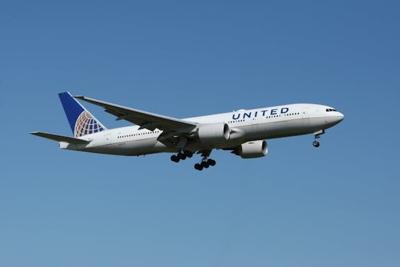
A private jet charter is the height of luxury. Although private air travel commands a premium price, flexible arrangements, like empty-leg flights, make it desirable and accessible to a wider market.
Empty-Leg Flights Soar
Empty-leg flights (also called “deadhead flights” or “ferry flights”) are one-way flights. They occur when a private jet must fly without passengers as it returns to base before its next booking. The flights offer passengers cost-effective travel options, sometimes with discounts of up to 75% off a regular private plane ticket. For instance, a charter flight to India from the US would cost close to $200,000, but on empty legs, you would only pay a fraction of that fare.
Google searches for “empty-leg flights” have soared to 120% in 2023, indicating that people are catching on to the high roller’s lifestyle without the need for a multimillion dollar income. People are willing to spend more for bucket-list travel experiences, which includes booking a private jet for empty leg flights.
Many private jet companies have plenty of opportunities for empty legs. The aviation industry estimates 25% to 50% of private jets may be flying empty. One of the ways to pick the right empty leg flight is to look into the safety standards of the charter.
Safety Measures in Empty-Leg Flights
What safety protocols and measures are in place to ensure that empty-leg flights are as safe as any other commercial or private aviation service?
Regulatory Oversight
The aviation industry is heavily regulated, and empty-leg flights are no exception.
In the United States, the Federal Aviation Administration (FAA) governs all aspects of civil aviation, including empty leg flights. Similarly, in Europe, the European Union Aviation Safety Agency (EASA) provides stringent regulations. These regulatory bodies enforce compliance with safety standards, maintenance schedules and pilot qualifications, ensuring that safety is never compromised.
Aircraft Maintenance
Maintenance protocols for aircraft used in empty legs are identical to those for any other commercial or private jet operations.
Aircraft are subject to rigorous inspections and maintenance schedules dictated by the manufacturer and regulatory authorities. This includes routine checks, periodic overhauls, and pre-flight inspections to identify and rectify any potential issues.
Certified technicians who follow strict standards and procedures to ensure aircraft airworthiness perform maintenance.
Pilot Training and Certification
Pilots operating empty-leg flights must hold the same certifications and undergo the same rigorous training as those flying scheduled flights. This includes obtaining an Airline Transport Pilot (ATP) certificate, the highest level of aircraft pilot certification.
Pilots must also complete recurrent training and proficiency checks, which include simulations of emergencies, to maintain their skills and knowledge.
Operational Safety Protocols
Operational safety protocols in charter flights are a set of guidelines and procedures designed to ensure the safety of passengers, crew, and aircraft during all phases of flight operations. These include:
1. Pre-Flight Inspections
Before each flight, pilots conduct thorough pre-flight inspections to ensure the aircraft is in optimal condition. This involves checking the aircraft’s systems, fuel levels, weather conditions, and flight plan.
2. Safety Management Systems (SMS)
Many operators implement safety management systems, which provide a structured approach to managing safety risks. SMS includes proactive hazard identification, risk assessment and mitigation strategies to enhance safety.
3. Crew Resource Management (CRM)
CRM training is essential for fostering effective communicationand teamwork among the flight crew. It emphasizes the importance of collaboration, problem-solving and decision-making skills, which are critical during routine and emergency situations.
4. Standard Operating Procedures (SOPs)
Operators follow stringent SOPs that outline detailed procedures for every phase of each flight. These procedures standardize operations, reduce the likelihood of errors, and ensure that safety protocols are consistently followed.
Passenger Safety Briefings
Although empty-leg flights often have fewer passengers than scheduled flights, passenger safety is paramount.
Crew members provide comprehensive safety briefings before takeoff, covering emergency exits, seat belts, and procedures to follow in the event of an emergency. Passengers are also informed about the location and use of safety equipment, such as life vests and oxygen masks.
Advanced Technology and Safety Equipment
Modern aircraft feature advanced technology and safety equipment to enhance flight safety. Safety systems include:
Traffic Collision Avoidance Systems (TCAS)
TCAS alerts pilots to potential mid-air collisions and provides resolution advisories to avoid them.
Ground Proximity Warning Systems (GPWS)
GPWS alerts pilots if the aircraft is in immediate danger of flying into the ground or an obstacle.
Automatic Dependent Surveillance-Broadcast (ADS-B)
ADS-B provides real-time tracking of aircraft positions, improving situational awareness and air traffic management.
Emergency Preparedness
Emergency preparedness is critical to aviation safety. Operators of empty-leg flights must have robust emergency response plans.
Flight crew receive extensive training in emergency procedures, including medical emergencies, fire outbreaks, and emergency landings. Aircraft are equipped with emergency kits, first aid supplies, and fire extinguishers to handle potential crises effectively.
Empty-leg flights follow stringent safety protocols and measures, ensuring they meet the highest aviation safety standards.
From rigorous maintenance schedules and pilot training to advanced technology and comprehensive operational procedures, every aspect of an empty-leg flight is designed to prioritize passenger and crew safety. This translates to safe and comfortable travel without the high prices associated with private jet charters.



(0) comments
We welcome your comments
Log In
Post a comment as Guest
Keep it Clean. Please avoid obscene, vulgar, lewd, racist or sexually-oriented language.
PLEASE TURN OFF YOUR CAPS LOCK.
Don't Threaten. Threats of harming another person will not be tolerated.
Be Truthful. Don't knowingly lie about anyone or anything.
Be Nice. No racism, sexism or any sort of -ism that is degrading to another person.
Be Proactive. Use the 'Report' link on each comment to let us know of abusive posts.
Share with Us. We'd love to hear eyewitness accounts, the history behind an article.